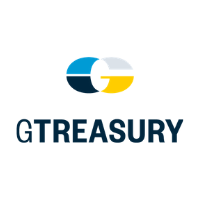When Should You Start a Hedge Program?
23-08-2022 | treasuryXL | GTreasury | LinkedIn |
A popular Chinese proverb says “the best time to plant a tree was 20 years ago. The second-best time is now.” This is equally true in the world of hedging.
Source: Hedge Trackers, a GTreasury Company

We’ve seen volatility in currency markets, with the EUR falling 9 percent between Labor Day and Thanksgiving. We’ve seen volatility in commodities, with some commodity prices doubling and tripling and oil prices approaching 10-year highs. And short-term interest rates may quadruple in a year.
Companies that have well-run hedge programs have time to prepare and adjust to these forces. But what if you’ve been waiting for “the best time” or “the right time” to hedge?
Two years ago, we were surprised with a global pandemic – when everything settles down, will it be a good time to start a hedge program? Before we even have a chance to assimilate that, we are now faced with war in Europe. Sanctions, which will almost certainly be followed by more sanctions and more volatility, and which will be followed by what? Are you feeling like you’ve missed the opportunity to start hedging?
It’s never too late to set up a hedge program.
Now, just like last week, last year, and five years ago, the steps are the same.
- Determine what your objective is. As our own Helen Kane says, “I believe that most hedge programs should take a deep breath, step back and determine what is really the objective…. Are they trying to protect margins? Are they trying to lock in budgeted earnings? Are they smoothing the year-over-year impact of currency into their financials?”
- Once you know your objective, identify and quantify your exposures. Investigate the start of the exposure (often not easy to identify) and its end. The answers will be different depending on your hedge objective, and that’s why it’s critical to get that objective determined first. It is expected that you would have different objectives for different exposures.
- You’re ready to start working on your policy, detailing what exposures will be managed with what strategies/derivatives over what time frame. You may want to consider some flexibility in the policy to systematically take advantage (or not), with clear guidelines generational rate movements – allowing more or less (but not zero) hedging in those times when rates hit 5- or 10-year highs or lows. This provides a framework to contemplate those things that we thought were so rare that we wouldn’t see them in our lifetime. Remember those days?
- There are other documents that will be necessary. If not addressed directly in your policy, you’ll want a guideline for accounting and an appropriate control structure. You’ll also need to make sure that inception documentation supporting any special hedge accounting is compliant.
- You’ll need to set up a process for collecting exposures at different stages (anticipated, recognized, impacting earnings, settled).
- Make sure that you have a good working relationship and legal framework (ISDA) with your counterparties and that you set up a good process for trading and competitive bidding.
- Of course, trade management and special hedge accounting should not be left to spreadsheets. We’d be happy to introduce you to CapellaFX, which not only is a trade repository but also accumulates your exposure data (existing and anticipated), applies hedge decisions, designates and documents exposures, drives your hedge accounting and provides effectiveness tests. Most importantly, it is user-friendly for both Treasury and Accounting and doesn’t require a derivative specialist to use or implement.
Conclusion
Does all of this seem daunting? It doesn’t have to be. Hedge Trackers can help you with every step. We have the people and the systems to assist your team, or you can offload some or all of the process to us.
Returning to our original question on the best time to plant the tree – or start a hedging program. If you haven’t already done so, recall that the next best time to start is right now.




